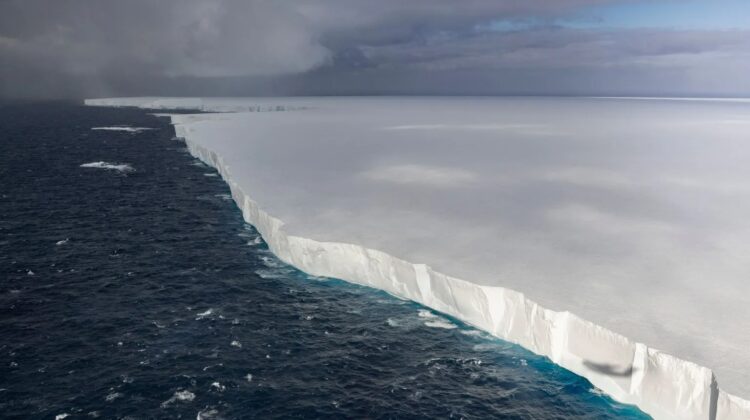
The world’s largest iceberg, a colossal behemoth three times the size of New York City, is drifting ominously towards South Georgia, a remote island in the South Atlantic and a vital breeding ground for millions of penguins and seals. Scientists warn that a collision with this icy giant, known as A23a, could trigger an ecological disaster, disrupting feeding patterns and threatening the survival of vulnerable penguin chicks and seal pups.
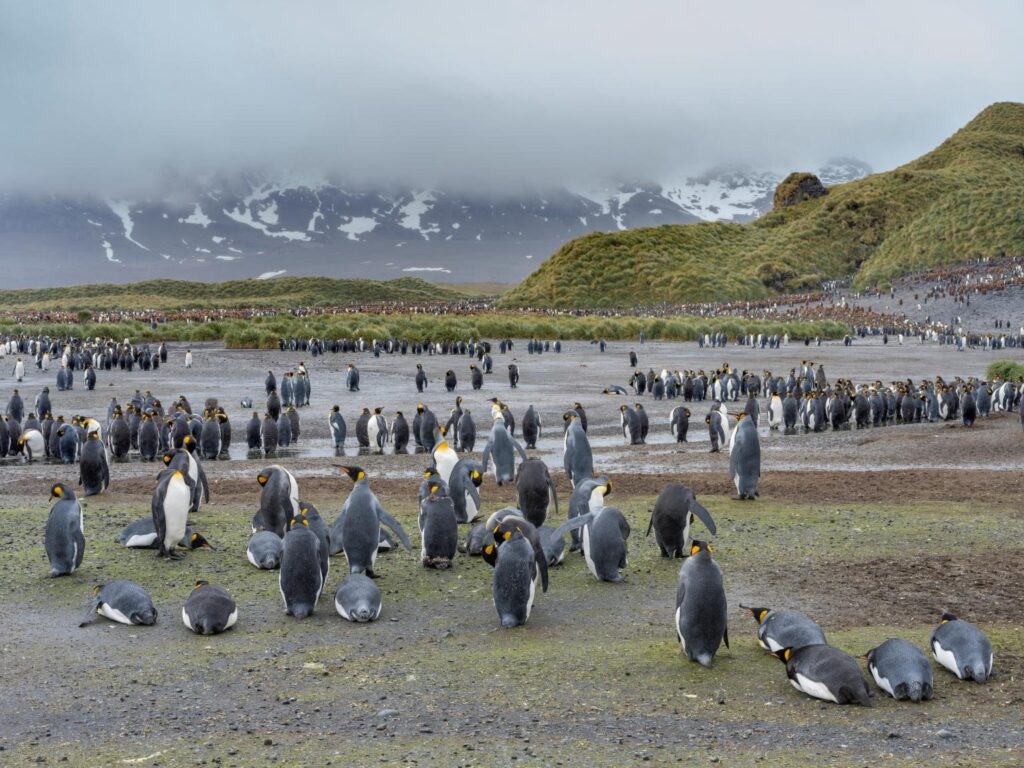
This “Game of Thrones-esque” wall of ice, as described by Andrew Meijers, a physical oceanographer at the British Antarctic Survey, has been slowly migrating from Antarctica. While its exact trajectory remains uncertain, prevailing ocean currents suggest it could reach South Georgia’s continental shelf within weeks. The potential consequences are alarming.
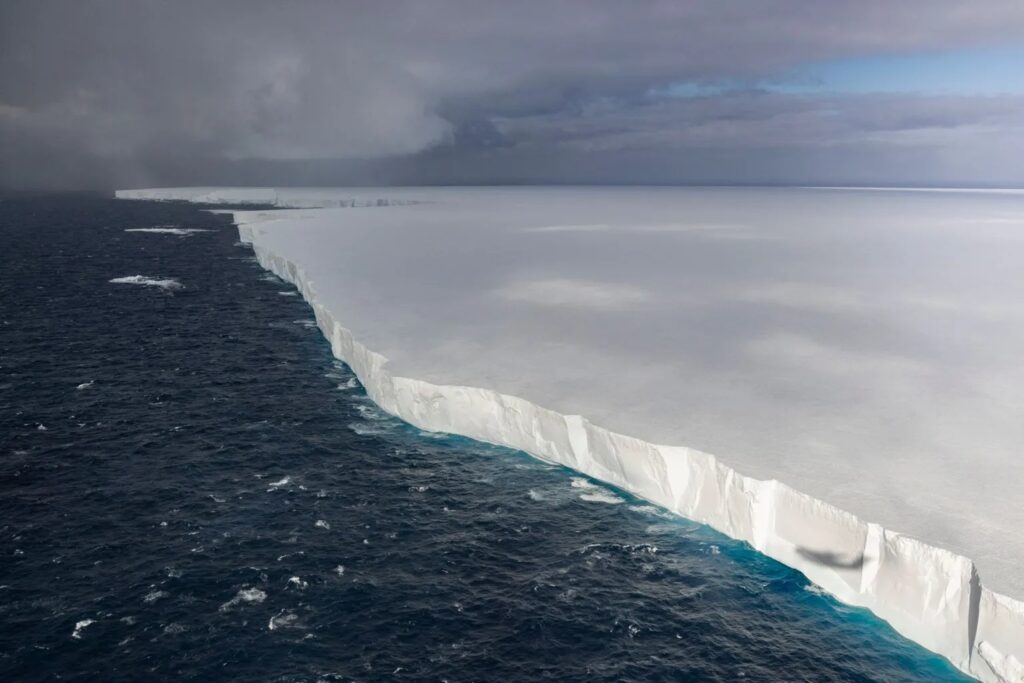
A Collision Course with Catastrophe?
The iceberg’s sheer size and depth pose a significant threat. If it grounds on the shallow seabed surrounding South Georgia, it could block crucial feeding areas for penguins and seals. These animals already face a “bad season” due to an outbreak of bird flu, and the added stress of navigating around a massive iceberg could severely impact their ability to nourish their young, leading to increased mortality.
“If the iceberg parks there, it’ll either block physically where they feed from, or they’ll have to go around it,” explains Meijers. “That burns a huge amount of extra energy for them, so that’s less energy for the pups and chicks, which causes increased mortality.”
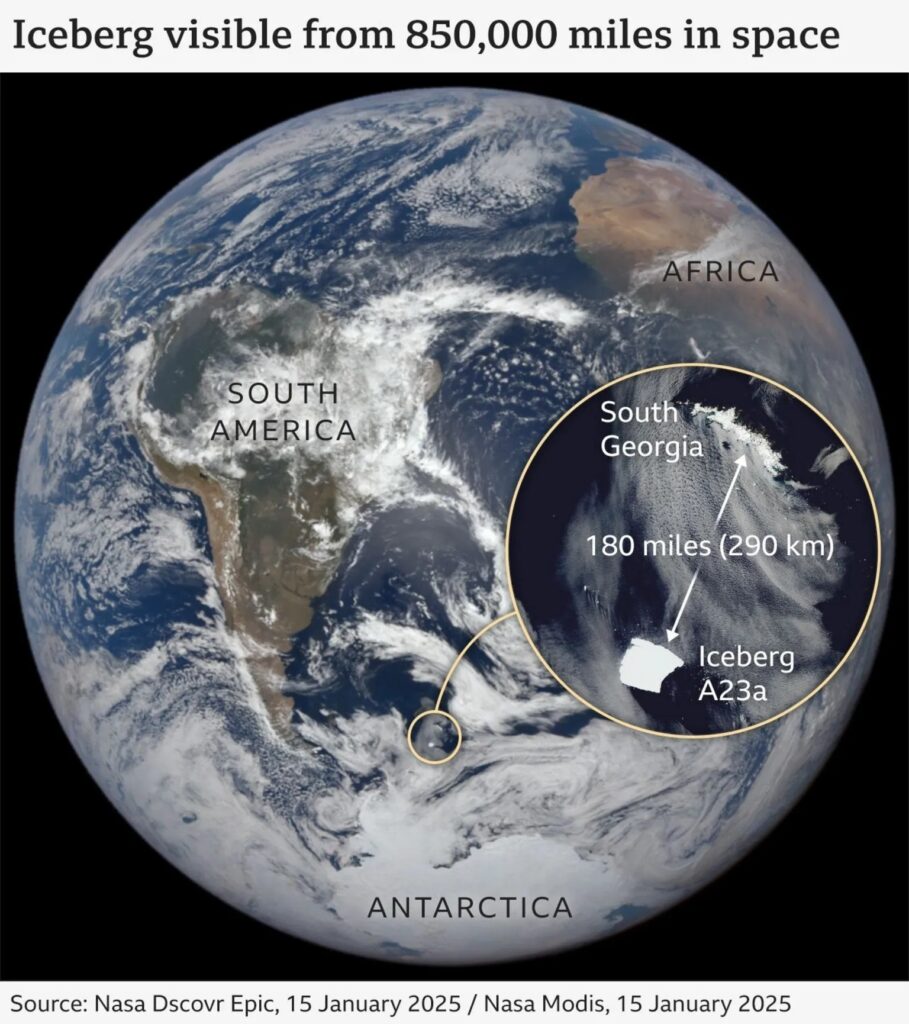
South Georgia is home to a staggering 1.3 million pairs of Chinstrap penguins, one of the world’s largest colonies, along with approximately 5 million seals and 65 million breeding birds. The island’s delicate ecosystem is highly vulnerable to such disruptions.
A Journey Across the Southern Ocean
A23a’s journey is a testament to the powerful forces at play in the Southern Ocean. Having calved from the Antarctic shelf in 1986, this trillion-ton iceberg remained grounded for over 30 years before finally breaking free in 2020. Its northward trek has followed a path similar to previous massive icebergs, through the Weddell Sea and along “iceberg alley,” the same route taken by the legendary explorer Ernest Shackleton during his epic escape from Antarctica in 1916.
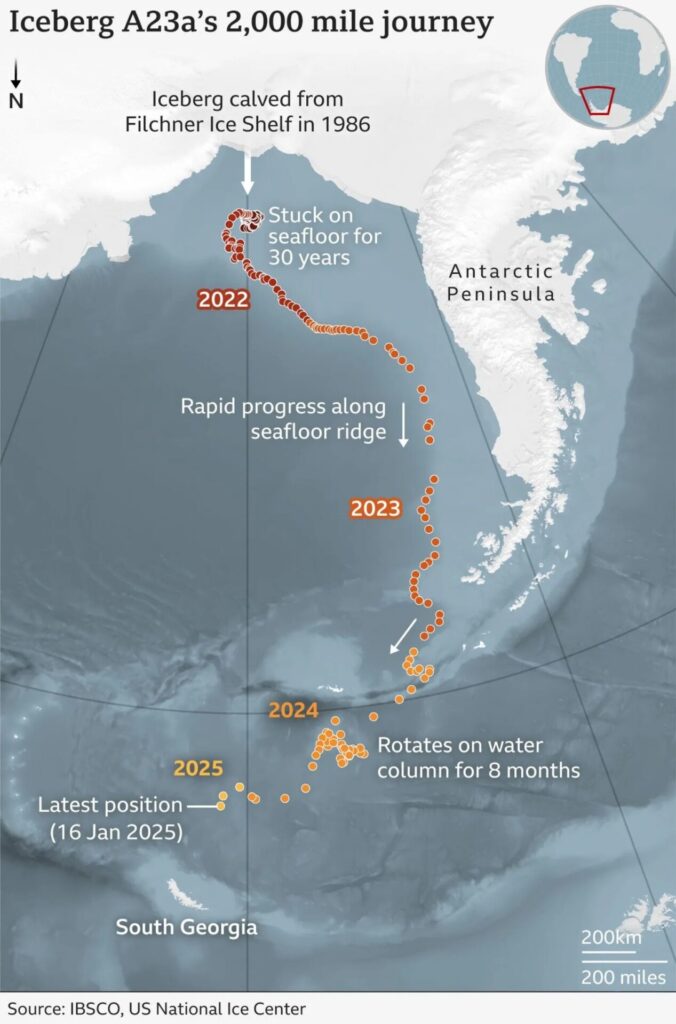
While some scientists, like Raul Cordero from Chile’s University of Santiago, believe the island’s influence on ocean currents will divert the iceberg, others caution that even smaller fragments breaking off could cause significant damage.
A Stark Reminder of Climate Change
While icebergs are a natural phenomenon, scientists emphasize that the increasing rate at which they are calving from Antarctica is likely linked to human-induced climate change. The recent disintegration of massive chunks of the Brunt and Larsen C ice shelves serves as a stark reminder of the accelerating impact of global warming on the polar regions.

Hope Amidst the Ice
Despite the potential for disaster, there is a glimmer of hope. As A23a melts, it could release nutrients into the water, potentially stimulating phytoplankton growth. These blooms can provide food for whales and other marine life and play a role in absorbing carbon dioxide from the atmosphere. Scientists are eager to study these processes to better understand the complex interactions within the Antarctic ecosystem.
The fate of South Georgia’s wildlife hangs in the balance. The world watches anxiously as this colossal iceberg continues its slow, inexorable journey, a powerful symbol of the challenges facing our planet in the age of climate change.

Leave a Reply